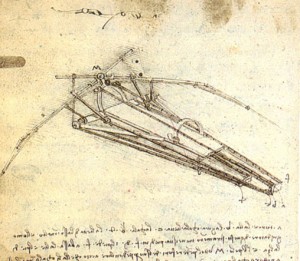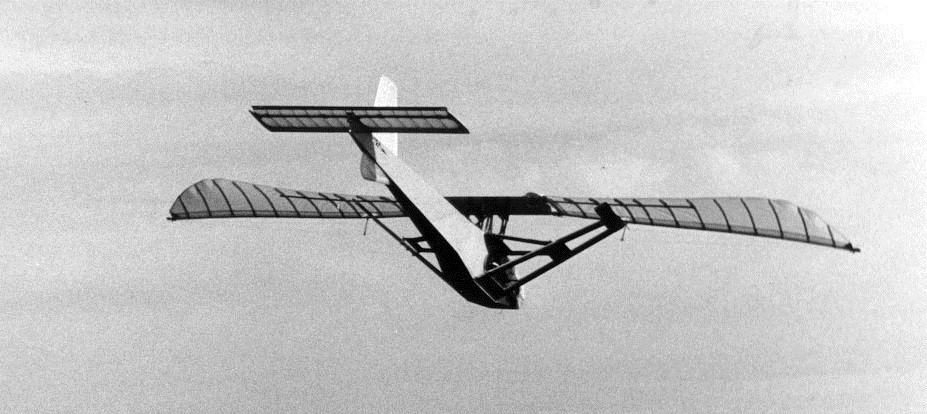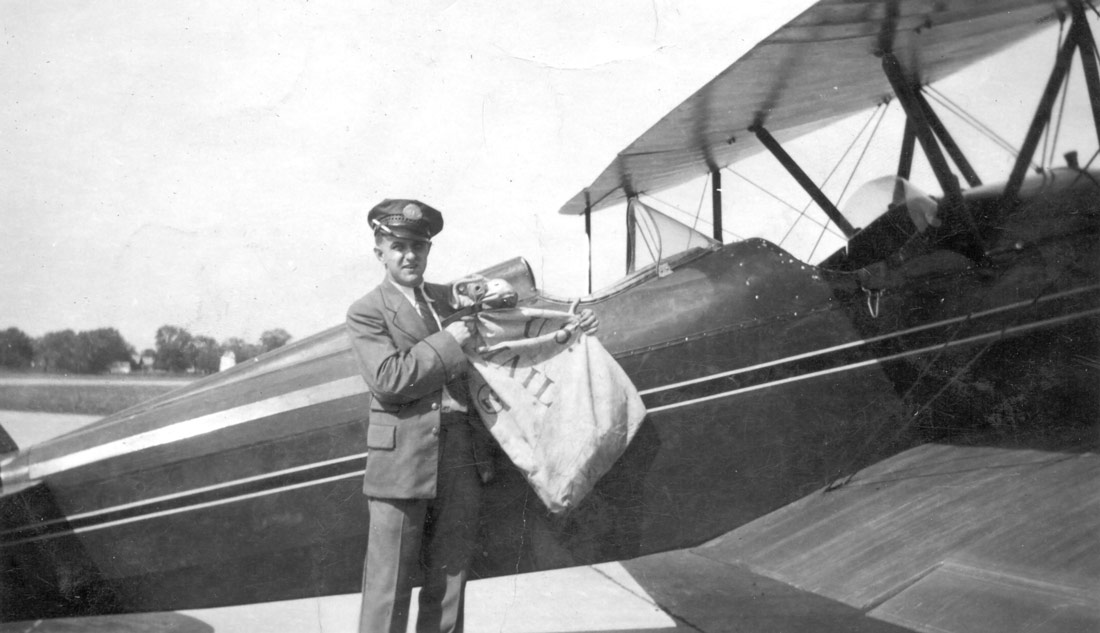The Ornithopter and Us

Man has always dreamed of flying. And stretching far back into our earliest recorded history, we can see references to attempts at flight. One of the more interesting and comical methods of flight was strapping feathered ‘wings’ to one’s arm, and then, well, flapping really hard. As you may imagine, our bulk and inability to flap with sufficient speed and force meant this was good for little more than comedy.
However, starting around the 4th century BC, we started shifting our focus to machine flight. One of the earliest design ideas referenced is the Ornithopter, a mechanical version of the ‘wing flapping’ method of flight. And though through the years, this too produced little effect, much research was devoted to this method. Finally, in 1485, Leonardo da Vinci began his study of the flight of birds. To him, it was obvious that humans are too heavy, and not strong enough to fly using wings simply attached to the arms. Continuing down the path of the ornithopter, da Vinci started producing designs and sketches for a machine in which the pilot lies down on a plank and works two large, membranous wings through the use of hand levers, foot pedals, and a pulley system. And though he was unable to construct a working ornithopter, the idea was now firmly in people’s mind.
Finally, the first ornithopters capable of flight were built by the French in the 19th century. Most of these ornithopters were models and were powered by rubber bands, springs, steam and compressed air. Gustave Trouve even created one that flew on internal combustion. The wings, powered by gunpowder charges which activated a bourdon tube, flapped Trouve’s model a distance of 230 feet (70 m) in a demonstration prepared for the French Academy of Sciences Starting in the 1900s, English aviation pioneer EP Frost began building ornithopters that were large enough to carry a pilot. He was, however, ultimately unsuccessful in achieving flight.
In 1929, a manned ornithopter finally achieved flight. It was a human-powered model, designed by Alexander Lippisch, and flew a distance of roughly 820 feet (250 m) after a tow launch. Because it used a tow launch, however, many questioned whether or not the aircraft was actually capable of flying on its own. Human-powered models, using a tow launch, became the norm for a time, and the resulting flights were usually brief, due to pilot muscle fatigue.
In 1942, German aviator Adalbert Schmid made a significantly longer flight using his human-powered ornithopter design. He was able to travel some 2950 feet (900 m) at a height of 65 feet (20 m) for most of the flight. Building on this success, this model was then outfitted with a 3 hp Sachs motorcycle engine. This allowed the ornithopter to achieve flights of up to 15 minutes. Schmid later built a newer ornithopter model, this one powered by a 10 hp engine of his own design, and was able to achieve flight again.
Continuing down the human-powered route, a team at the University of Toronto led by Todd Reichert finally achieved what may be a new first in ornithopter history, by setting a sustained flight record of almost 20 seconds, covering roughly 475 feet (145 m) at a speed of 15.9 miles per hour (25.6 km/h). The ornithopter dubbed Snowbird was towed by a car until it became airborne, at which point the pilot pumped a bar with his feet that, through a system of wires, flapped the wings. After additional testing, Snowbird is thought to be capable of continual flight once airborne, for as long as the pilot can keep operating the bar.
All in all, a fascinating part of aviation. Here, for your viewing pleasure, is Snowbird in flight.















Leave a Reply